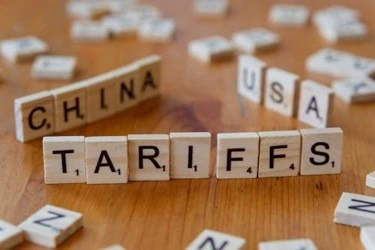Tariff Shock 2025: Understanding the Tariff Shopper’s Mindset

Last updated on April 16, 2025

In this article
 9 minutes
9 minutes
The 2025 tariff increases have intensified economic pressures on ecommerce sellers, leading to heightened anxiety over rising Costs of Goods Sold (COGS) and the potential loss of customers and revenue due to necessary price adjustments. Meanwhile, consumers are also compelled to adapt swiftly, and sellers must take the time to understand the psychological shifts in consumer spending and implement strategic business adjustments to sustain and grow their businesses in these turbulent times.
The Psychology of the Tariff-Era Consumer
Economic uncertainty, amplified by the recent tariffs, has significantly influenced consumer behavior. Shoppers are exhibiting increased caution, prioritizing essential goods over discretionary spending. This shift is rooted in the desire to maximize value and ensure financial stability amid rising prices. For instance, consumers are stocking up on non-perishable items like canned goods and household supplies in anticipation of further price hikes.
Buyer Personas in the 2025 Tariff Environment
1. The Budget-Conscious Parent
- Goals: Stretch the household budget to cover essential needs for the family.
- Purchases: Bulk buys of diapers, generic brand groceries, and discounted children’s clothing.
- Product Positioning: Emphasize “Bulk Savings,” “Family Essentials,” and “Value Packs.”
Slash Your Fulfillment Costs by Up to 30%
Cut shipping expenses by 30% and boost profit with Cahoot's AI-optimized fulfillment services and modern tech —no overheads and no humans required!
I'm Interested in Saving Time and Money2. The Small Indulgence Shopper
- Goals: Seek affordable luxuries to maintain morale without a significant financial impact.
- Purchases: Artisanal chocolates, scented candles, and specialty teas.
- Product Positioning: Highlight “Affordable Luxury,” “Treat Yourself,” and “Everyday Indulgence.”
3. The Prepper-Inspired Planner
- Goals: Prepare for potential shortages and future price increases by stockpiling essentials.
- Purchases: Emergency food kits, multipurpose tools, and first-aid supplies.
- Product Positioning: Use “Be Prepared,” “Emergency Essentials,” and “Long-Term Value.”
4. The Homebody Investor
- Goals: Enhance the home environment to compensate for reduced spending on external entertainment.
- Purchases: Home improvement tools, board games, and home workout equipment.
- Product Positioning: Focus on “Home Comforts,” “Staycation Upgrades,” and “Invest in Your Space.”
Product Categories Resilient to Tariff Impacts
1. Made-in-USA Goods
- Examples: Handcrafted furniture, domestically produced apparel, and local artisanal foods.
- Rationale: Avoidance of import tariffs makes these products more competitively priced.
- Consumer Appeal: Patriotic support for local businesses and assurance of quality.
2. Luxury and High-End Items
- Examples: Designer handbags, premium electronics, and high-end kitchen appliances.
- Rationale: Affluent consumers may remain less sensitive to price increases, sustaining demand.
- Consumer Appeal: Perceived long-term value and status associated with luxury goods.
3. Essential Goods
- Examples: Toiletries, over-the-counter medications, and staple food items like rice and bread.
- Rationale: Necessities maintain consistent demand regardless of economic conditions.
- Consumer Appeal: Indispensable nature ensures prioritized spending.
4. Sustainable and Eco-Friendly Products
- Examples: Reusable water bottles, biodegradable packaging, and solar-powered gadgets.
- Rationale: Growing environmental consciousness drives demand, and domestic production may mitigate tariff effects.
- Consumer Appeal: Alignment with personal values and potential long-term cost savings.
5. Digital Goods and Services
- Examples: Online streaming subscriptions, e-books, and virtual fitness classes.
- Rationale: Intangible products are not subject to import tariffs.
- Consumer Appeal: Immediate access and convenience.
Products Likely to Experience Price Hikes
Certain products are more susceptible to price increases due to their reliance on imported materials or components. Consumers may consider purchasing these items before tariffs fully impact retail prices:
- Electronics: Smartphones, laptops, and televisions often rely on imported components, making them vulnerable to price increases.
- Automobiles and Parts: Vehicles and replacement parts are facing higher tariffs, leading to increased costs for consumers.
- Appliances: Refrigerators, washing machines, and microwaves may see price hikes due to increased costs of imported steel and components.
- Furniture: Items such as sofas and dining sets, especially those manufactured overseas, are likely to become more expensive.
- Footwear and Apparel: Clothing and shoes imported from tariff-affected countries may experience price increases.
Looking for a New 3PL? Start with this Free RFP Template
Cut weeks off your selection process. Avoid pitfalls. Get the only 3PL RFP checklist built for ecommerce brands, absolutely free.
Get My Free 3PL RFPStrategies for Ecommerce Sellers to Adapt and Sustain Their Businesses
In response to the tariff-induced economic shifts, ecommerce sellers can implement several strategies to maintain profitability and meet changing consumer needs:
1. Diversify Sourcing and Manufacturing
- Reshoring Production: Bringing manufacturing back to domestic facilities can mitigate tariff impacts and supply chain disruptions. While this transition requires significant investment and time, it offers long-term stability and control over production processes. However, it is important to note that reshoring efforts have historically faced challenges, including high domestic costs and infrastructure limitations. Analysts caution that without substantial policy support, significant reshoring remains unlikely.
- Nearshoring: Establishing manufacturing operations in neighboring countries with more favorable trade agreements can reduce tariff exposure and shorten supply chains. This approach balances cost-effectiveness with logistical advantages.
- Alternative International Suppliers: Identifying suppliers in countries less affected by the tariffs can help maintain competitive pricing. For instance, shifting sourcing from China to the Philippines or Malaysia may offer cost benefits. However, make sure to fully evaluate the reliability and quality standards of new suppliers.
2. Optimize Inventory Management
- Stockpiling: Increasing inventory levels of high-demand or tariff-impacted products can buffer against supply chain disruptions and price volatility. This strategy requires careful financial planning to manage the associated carrying costs.
- Just-in-Time (JIT) Inventory: Implementing JIT practices minimizes holding costs by aligning inventory levels closely with demand. While this reduces storage expenses, it necessitates a highly responsive supply chain to avoid stockouts.
3. Implement Strategic Pricing Adjustments
- Transparent Communication: Clearly informing customers about the reasons for price increases, such as tariff-induced costs, or how you’re making changes to improve efficiency so you can maintain pricing at this delicate time, can foster understanding and promote trust.
- Value-Based Pricing: Emphasizing the unique value propositions of products, such as superior quality or sustainability, can justify higher prices. Highlighting these aspects differentiates products in a competitive market.
- Bundling Products: Offering product bundles or value packs can enhance perceived value, encouraging customers to make purchases despite price increases. This strategy can also help move inventory more efficiently.
4. Enhance Supply Chain Resilience
- Supplier Diversification: Reducing dependence on a single supplier or region decreases vulnerability to disruptions. Building relationships with multiple suppliers ensures alternative options are available when needed.
- Supply Chain Visibility: Investing in technology that provides real-time tracking and analytics enhances the ability to anticipate and respond to potential issues promptly. Improved visibility aids in proactive decision-making.
- Collaborative Relationships: Strengthening partnerships with suppliers and logistics providers and collaborating on solutions to mitigate tariff impacts and streamline operations.
5. Leverage Technology and Automation
- Ecommerce Platforms: Utilizing advanced ecommerce platforms can optimize operations, from inventory management to customer relationship management, reducing overhead costs. Platforms like Cahoot offer technology-driven solutions to enhance efficiency.
- Automation Tools: Implementing automation in areas such as order processing and fulfillment can reduce labor costs and improve accuracy, contributing to overall cost savings.
- Outsourcing Fulfillment: Distributing inventory to support 1- and 2-day nationwide shipping using ground services lowers final-mile transportation costs while meeting customer delivery expectations. The improved margins often pay for the managed services.
6. Explore Alternative Product Offerings
- Domestic Products: Focusing on products manufactured domestically can circumvent tariffs and appeal to customers interested in supporting local businesses. This approach aligns with growing consumer preferences for locally sourced goods.
- Digital Products: Expanding into digital goods and services, which are not subject to import tariffs, can diversify revenue streams and reduce reliance on physical products.
7. Monitor and Advocate for Policy Developments
- Stay Informed: Keeping abreast of trade policies and tariff changes enables proactive adjustments to business strategies. Regularly consulting reliable news sources and industry reports is essential.
- Industry Advocacy: Participating in industry associations and advocacy groups can influence policy decisions and provide collective support in navigating trade challenges.
By implementing these strategies, ecommerce sellers can address the challenges posed by rising prices (COGS) due to the new reciprocal tariffs, maintain customer loyalty, and sustain revenue streams. Adaptability, informed decision-making, and strategic planning are crucial in turning these challenges into opportunities for growth and resilience.
Scale Faster with the World’s First Peer-to-Peer Fulfillment Network
Tap into a nationwide network of high-performance partner warehouses — expand capacity, cut shipping costs, and reach customers 1–2 days faster.
Explore Fulfillment NetworkFrequently Asked Questions
How are the 2025 tariffs impacting ecommerce consumer behavior?
The 2025 tariffs have caused a noticeable shift in consumer psychology. Shoppers are now prioritizing essential goods and cost-saving strategies while reducing discretionary spending. Many are stockpiling staples like canned food and household items in anticipation of future price increases, while others seek small indulgences or home improvements to maintain quality of life without overspending. Ecommerce sellers must understand these behavioral shifts to effectively reposition their offerings and messaging.
What types of products are most vulnerable to price hikes under the new tariffs?
Products that rely heavily on imported components or materials, such as electronics, appliances, automobiles and parts, furniture, and imported footwear or apparel, are particularly susceptible to price increases. Ecommerce merchants should anticipate rising COGS in these categories and consider both inventory planning and sourcing adjustments to stay competitive.
What can ecommerce sellers do to protect their margins and customer base amid rising COGS?
Sellers should take a multi-pronged approach:
- Diversify sourcing (e.g., explore nearshoring or alternative countries less affected by tariffs).
- Enhance inventory strategies, like stockpiling high-demand SKUs or implementing just-in-time models.
- Use value-based pricing and communicate price changes transparently.
- Introduce bundles and domestic alternatives to maintain customer loyalty.
- Leverage technology (like Cahoot’s advanced shipping and fulfillment platform) to reduce operating costs and improve delivery efficiency.
Why is reshoring or nearshoring worth considering despite the upfront costs?
Reshoring production or nearshoring to neighboring countries like Mexico can help ecommerce businesses mitigate future tariff risks, reduce lead times, and gain more control over their supply chains. While it involves higher initial investment, the long-term benefits include greater stability, increased brand trust from “Made in USA” labeling, and potential cost savings from improved logistics and reduced reliance on volatile overseas markets.
How can technology platforms like Cahoot help ecommerce sellers weather the tariff storm?
Cahoot goes beyond traditional shipping software by offering a peer-to-peer fulfillment network, multi-carrier rate shopping, predictive cartonization, hazmat compliance tools, and automated shipment monitoring—all designed to reduce shipping costs, improve fulfillment speed, and maintain customer satisfaction. These capabilities allow sellers to absorb rising COGS more effectively without compromising service quality or profitability.

Turn Returns Into New Revenue





